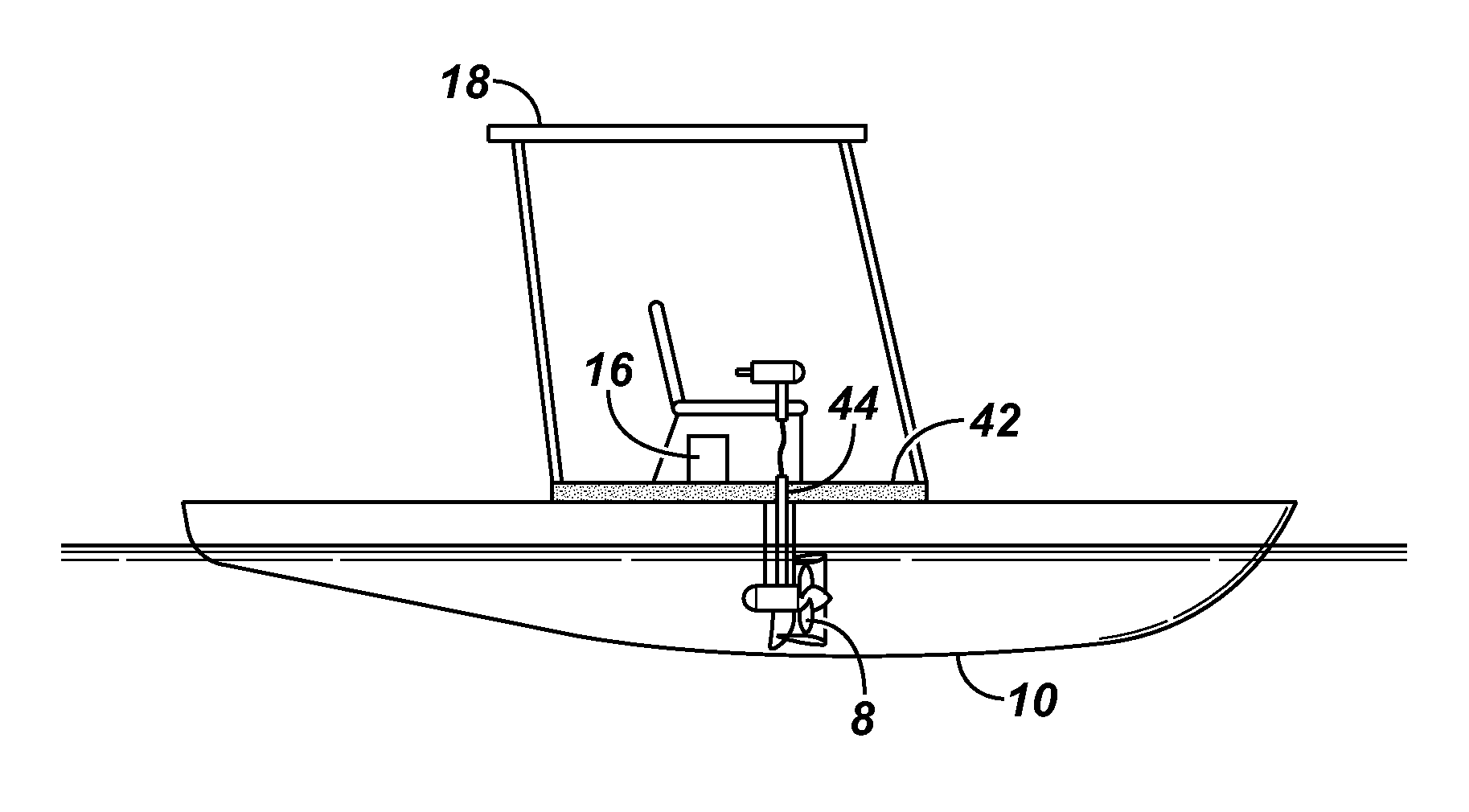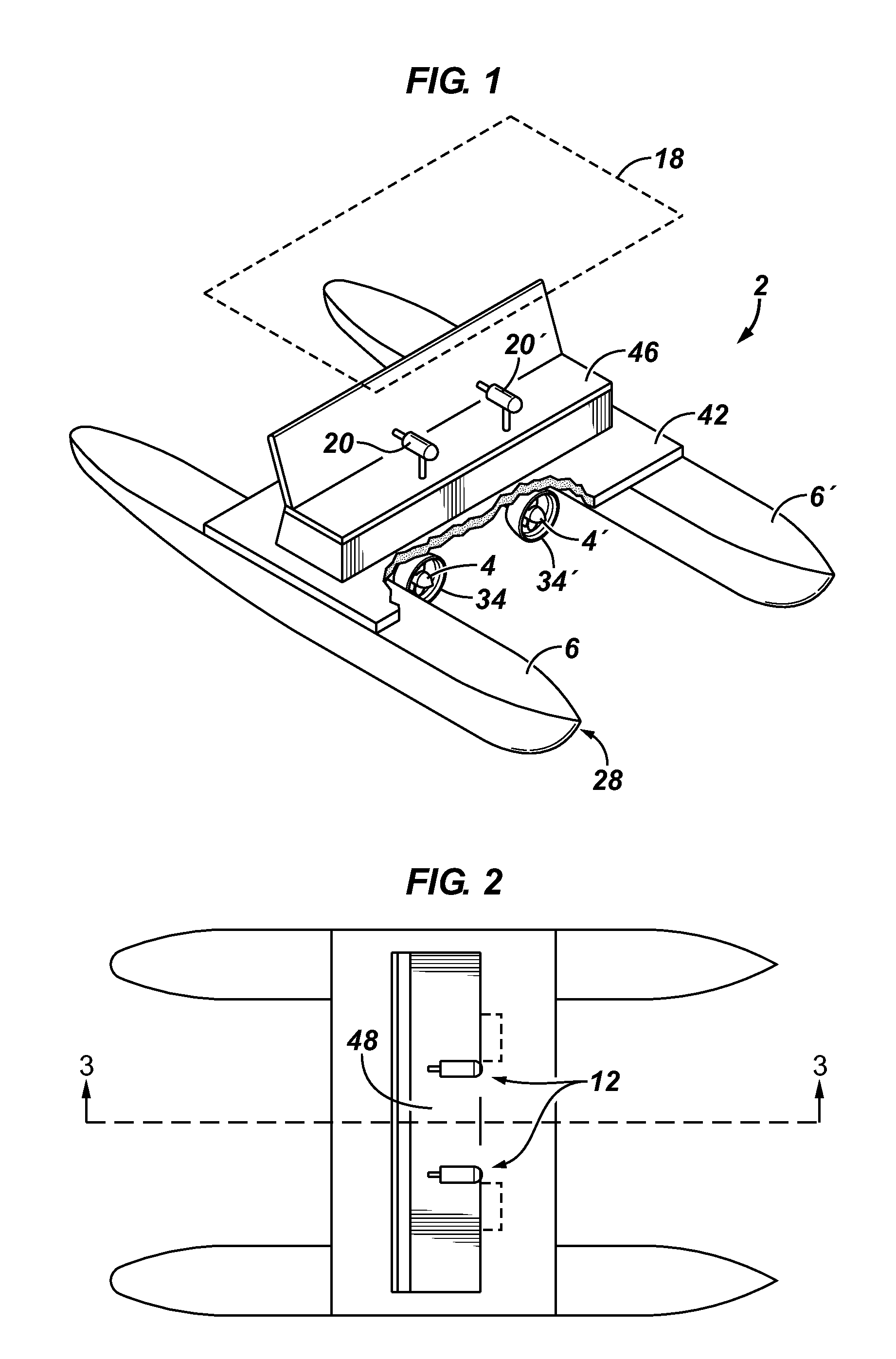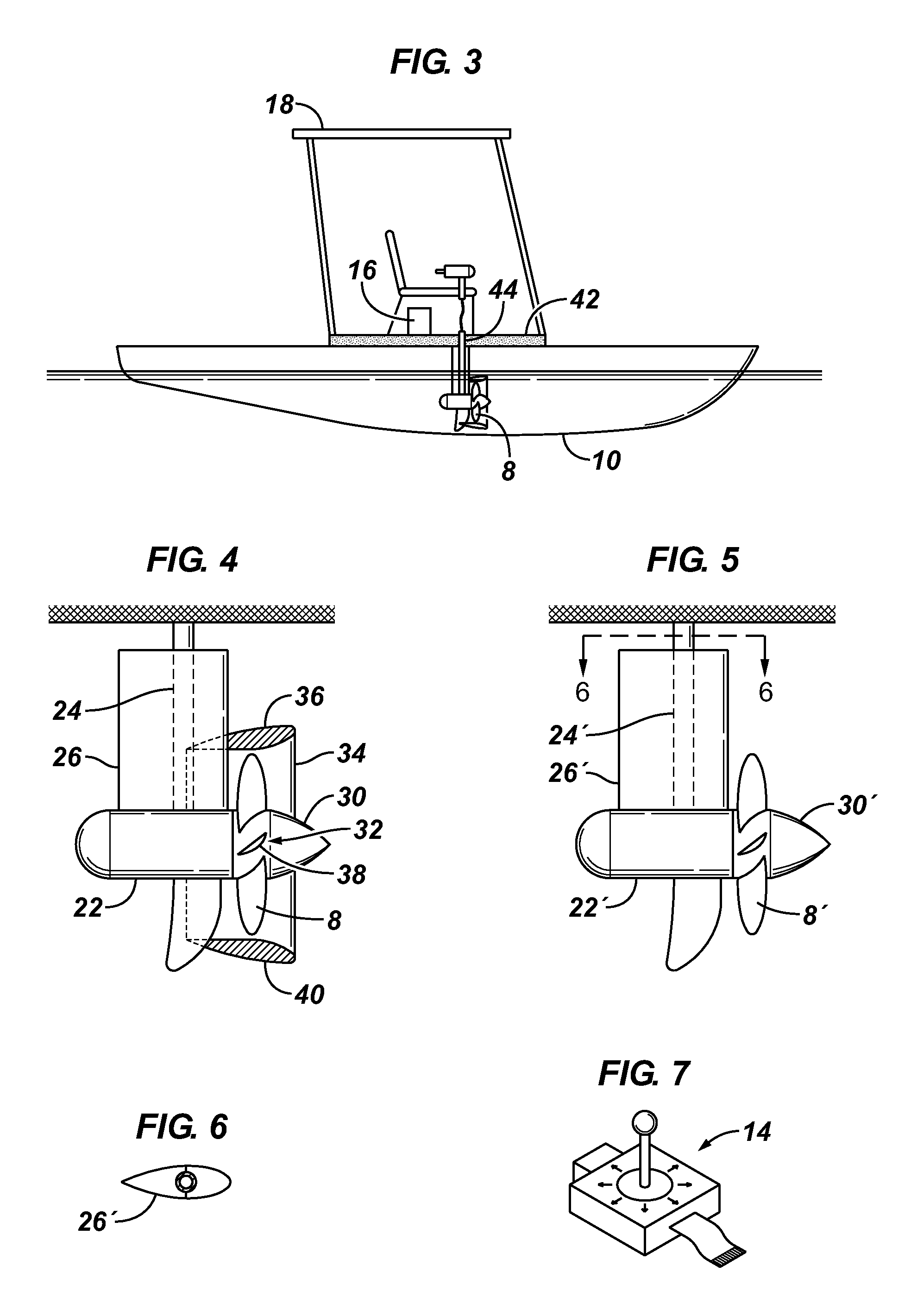Propulsion system for multihull watercraft
a technology for watercraft and propulsion systems, applied in marine propulsion, vessel construction, energy supply, etc., can solve the problems of tripping hazards, insufficient floatation and height above the waterline at this location to protect the propulsion unit, and large drag on a displacement hull
- Summary
- Abstract
- Description
- Claims
- Application Information
AI Technical Summary
Benefits of technology
Problems solved by technology
Method used
Image
Examples
Embodiment Construction
[0021]A catamaran or trimaran can be skid-steered by two widely spaced propulsion units positioned amidships, inboard of the outermost hulls. The only controls necessary are those which provide the ability to control propulsion unit speed and the direction of propeller rotation. The propulsion units are positioned to provide thrust parallel to the boat axis, and are preferably fixed in such position. Because the need to control motor tilt and direction is eliminated, the conventional trolling motor mounting brackets can be totally eliminated and the downshafts secured to the deck or hatches in the deck by collars or the like to save weight.
[0022]The amidships position of the propulsion units facilitates “skid steering” the boat, particularly in a cross wind, as compared to stern mounted units. The ability to turn the propulsion units is not needed, nor is a rudder nor the means for controlling it. However, in the embodiment of the invention shown in FIG. 8, a rudder may be needed, a...
PUM
 Login to View More
Login to View More Abstract
Description
Claims
Application Information
 Login to View More
Login to View More - R&D
- Intellectual Property
- Life Sciences
- Materials
- Tech Scout
- Unparalleled Data Quality
- Higher Quality Content
- 60% Fewer Hallucinations
Browse by: Latest US Patents, China's latest patents, Technical Efficacy Thesaurus, Application Domain, Technology Topic, Popular Technical Reports.
© 2025 PatSnap. All rights reserved.Legal|Privacy policy|Modern Slavery Act Transparency Statement|Sitemap|About US| Contact US: help@patsnap.com



